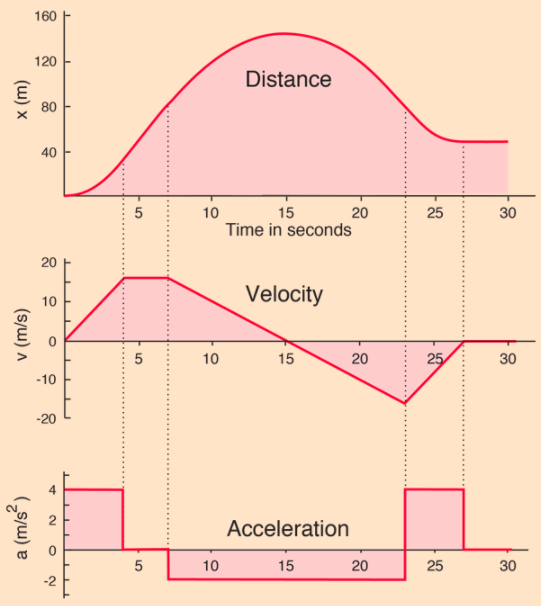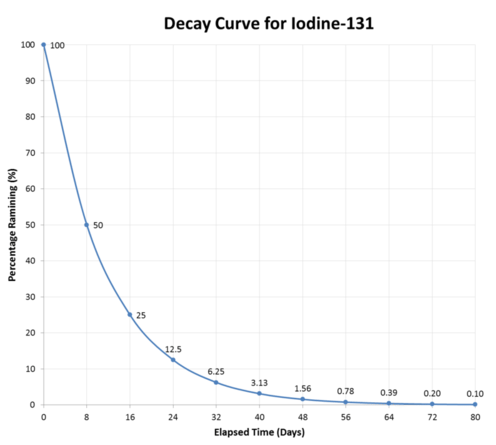Your Time has Finished
Loading...
GAMSAT Section III Physics – Part 2
Your Score: %
Average Score of All Users:
You performed better than of students
Section Breakdown
| Your Score | Average of all Users | Percentile | |
|---|---|---|---|
| Physics - Part 2 |
Physics - Part 2
Your score:
Average score:
You performed better than of students
Speed as well as accuracy is important in this section. Work quickly, or you might not finish the paper. There are no penalties for incorrect responses, only marks for correct answers, so you should attempt all questions. Each question is worth one mark.
You must complete the answers within the time limit. Calculators are NOT permitted.
Good Luck!
Motion and forces

Image reference: http://hyperphysics.phy-astr.gsu.edu/hbase/Mechanics/motgraph.html
Explanation
The correct answer is C.
Of the statements the only one which can be supported by the graph is C.
Motion and forces

Image reference: http://hyperphysics.phy-astr.gsu.edu/hbase/Mechanics/motgraph.html
Explanation
The correct answer is B.
Using the graph candidates should be able to determine that answer B is correct.
Motion and forces

Image reference: http://hyperphysics.phy-astr.gsu.edu/hbase/Mechanics/motgraph.html
Explanation
The correct answer is B.
Candidates should look at the graph for acceleration.
Motion and forces

Image reference: http://hyperphysics.phy-astr.gsu.edu/hbase/Mechanics/motgraph.html
Explanation
The correct answer is C.
Candidates should be able to use the graphs to reason that C is correct. Velocity is increasing, there is acceleration and a plateau is being approached.
 Sam
Medicmind Tutor
Sam
Medicmind Tutor
Fri, 26 Aug 2022 08:50:36
Is the velocity not decreasing towards zero? After which it comes to a standstill. And the negative sign just implies that it is travelling in the opposite direction?
Explanation
The correct answer is D.
 joel
Medicmind Tutor
joel
Medicmind Tutor
Wed, 23 Mar 2022 23:54:58
can someone explain this
 guest
Medicmind Tutor
guest
Medicmind Tutor
Sat, 28 May 2022 20:03:06
Joel, half-life is the time required for a quantity to reduce to half of its initial value. So, in this question the half-life for iodine-131 would be determined from 100% to 50% which is 8 days.
Explanation
The correct answer is C.
Explanation
The correct answer is C.
Explanation
The correct answer is B.
Candidates should be able to answer all of these questions using the graph.
 Arthur Jones
Medicmind Tutor
Arthur Jones
Medicmind Tutor
Sat, 04 Sep 2021 09:19:31
You can't answer this one with the graph?
 Chris
Medicmind Tutor
Chris
Medicmind Tutor
Tue, 07 Sep 2021 22:01:22
The graph shows hours, not days. Therefore it's four days and the correct answer would be 10am.
 Erjon
Medicmind Tutor
Erjon
Medicmind Tutor
Wed, 02 Feb 2022 21:45:52
How can this question be answered when the elapsed time is in days?
 Stephanie
Medicmind Tutor
Stephanie
Medicmind Tutor
Sun, 27 Feb 2022 13:38:40
Agree with Chris! There are just too many errors in these questions, who came up with them??
 Kyle
Medicmind Tutor
Kyle
Medicmind Tutor
Fri, 01 Sep 2023 00:42:36
The Answer is B if you substitute "days" for "hours" in the x axis. Poorly written question.
Waves
Explanation
The correct answer is C.
Violet light has the smallest wavelength and therefore the highest index of refraction. The higher the index of refraction the more the light bends and therefore the smaller the angle of refraction.
 guest
Medicmind Tutor
guest
Medicmind Tutor
Sat, 28 May 2022 20:06:16
A lot of these questions are too easy
 Alex
Medicmind Tutor
Alex
Medicmind Tutor
Fri, 24 Feb 2023 12:32:07
I'm confused, the question is "Which colour of the visible spectrum would have the smallest angle of refraction?" which is red? The explanation answers which has the highest index of refraction.
 Kyle
Medicmind Tutor
Kyle
Medicmind Tutor
Fri, 01 Sep 2023 00:52:05
@Alex, the angle of refraction is relative to the normal line from the reflection interface. Red refracts the least when entering a medium so its angle to the normal line would be the largest. Because violet has the highest refractive index, it refracts more when entering the medium and therefore is "closer" to the normal line - it has a smaller angle of refraction.
Waves
Explanation
The correct answer is B.
Candidates should be able to immediately recognise the red flag language of always in answer B so even if they are unsure of this physics topic they should be able to identify the correct answer.
 Hyoshin
Medicmind Tutor
Hyoshin
Medicmind Tutor
Wed, 26 Oct 2022 14:10:31
The answer and the explanation does not tally. The explanation warns of a "red flag" and that option is the answer?
Waves
Explanation
The correct answer is A.
This may be a tough question for candidates and they should think about what is more likely to cause light to bend.
 Michelle
Medicmind Tutor
Michelle
Medicmind Tutor
Mon, 28 Aug 2023 00:12:33
If light is totally internally reflected then it does not travel from one medium to another. Answer A is incorrect.
Physics - Part 2 Review Screen
Instructions
Below is a summary of your answers. You can review your questions in three (3) different ways.
The buttons in the lower right-hand corner correspond to these choices:
1. Review all of your questions and answers.
2. Review questions that are incomplete.
3. Review questions that are flagged for review. (Click the 'flag' icon to change the flag for review status.)
You may also click on a question number to link directly to its location in the exam.
Physics - Part 2 Section
Final Answer Review Screen
Instructions
This review section allows you to view the answers you made and see whether they were correct or not. Each question accessed from this screen has an 'Explain Answer' button in the top left hand side. By clicking on this you will obtain an explanation as to the correct answer.
At the bottom of this screen you can choose to 'Review All' answers, 'Review Incorrect' answers or 'Review Flagged' answers. Alternatively you can go to specific questions by opening up any of the sub-tests below.
Physics - Part 2 Section
TI-108
Let's get acquainted ?
What is your name?
Nice to meet you, {{name}}!
What is your preferred e-mail address?
Nice to meet you, {{name}}!
What is your preferred phone number?
What is your preferred phone number?
Just to check, what are you interested in?
When should we call you?
What time works best for you? (UK Time)
How many hours of 1-1 tutoring are you looking for?
My WhatsApp number is...
For our safeguarding policy, please confirm...
For our safeguarding policy, please confirm...
Which online course are you interested in?
What is your query?
SubmitYou can apply for a bursary by clicking this link
https://www.medicmind.co.uk/medic-mind-foundation/Sure, what is your query?
SubmitLoading...
Thank you for your response.
We will aim to get back to you within 12-24 hours.
Lock in a 2 Hour 1-1 Tutoring Lesson Now
If you're ready and keen to get started click the button below to book your first 2 hour 1-1 tutoring lesson with us. Connect with a tutor from a university of your choice in minutes. (Use FAST5 to get 5% Off!)
Buy Now for £70
Tue, 15 Feb 2022 13:04:03
This is not true. A change in velocity does not necessarily mean there is a change of acceleration. If velocity is increasing at a linear rate then acceleration is constant so then there is no change in acceleration but velocity is still increasing.
Sun, 27 Feb 2022 13:26:26
Agree with what Sam said.
Mon, 25 Apr 2022 19:27:23
C cannot be correct as at time 15 seconds there is a change in velocity with a constant acceleration. B should be correct as there is a positive relationship with a positive acceleration resulting in an increase in velocity.